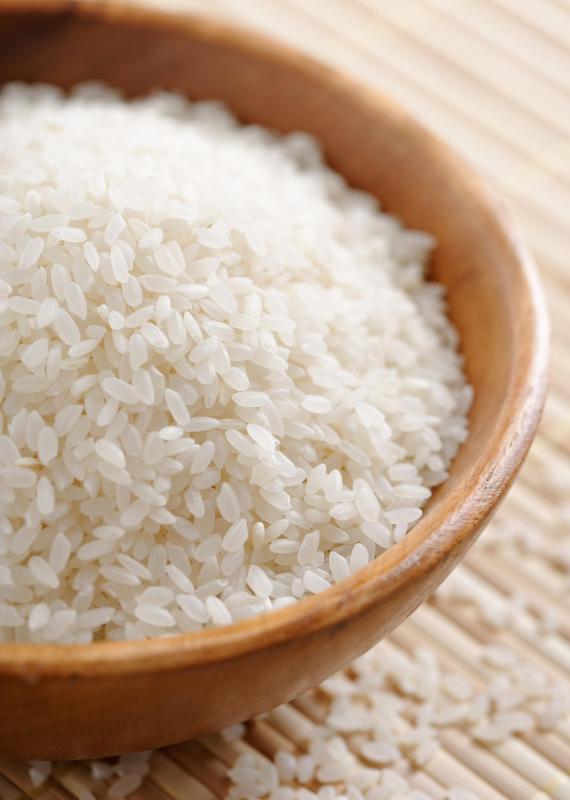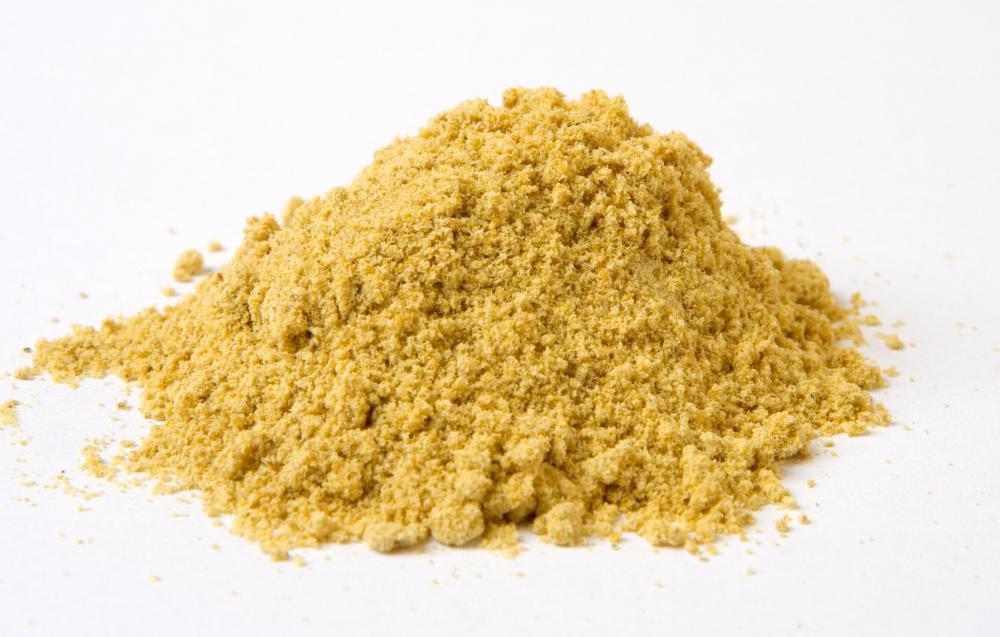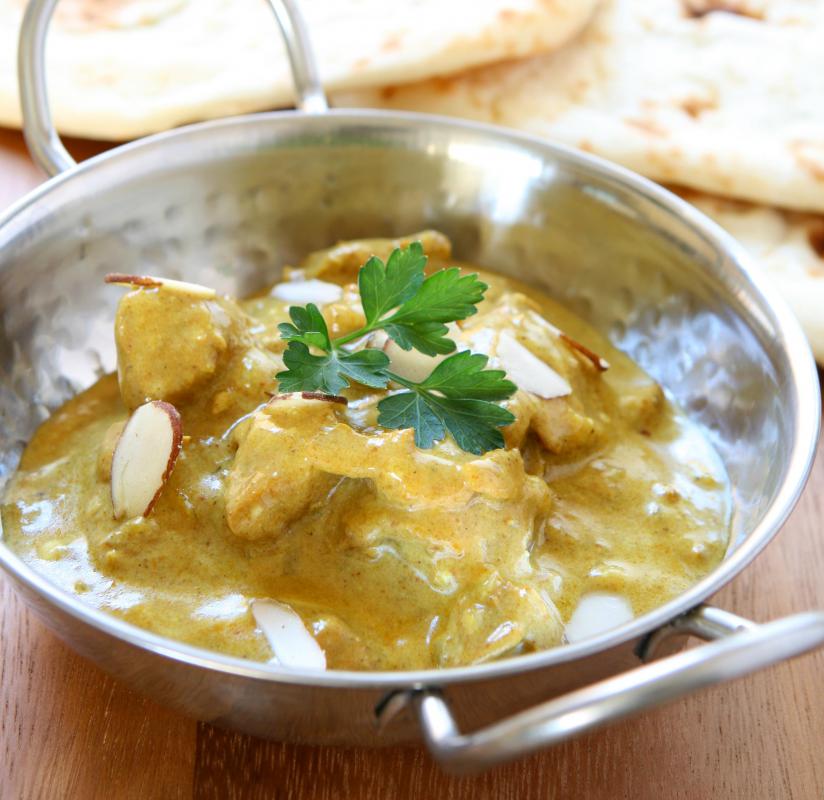At DelightedCooking, we're committed to delivering accurate, trustworthy information. Our expert-authored content is rigorously fact-checked and sourced from credible authorities. Discover how we uphold the highest standards in providing you with reliable knowledge.
Where does Curry Come from?
Curry is widely eaten throughout southeast Asia, although it has its roots in Indian cuisine. A curry is any type of spiced dish, usually with meat, fish, or vegetables and a rich sauce. The mixture of spices used to make a it often comes in a ground form known as curry powder, although it is also sold in the form of paste, suspended in oil and tamarind paste or other thickeners. This dish is widely eaten all over the world, thanks to the delicious taste and myriad variations used to prepare it.
The word “curry” probably originates from the Tamil word “kari,” which was used to refer to a relish or sauce for rice. Most Indian curries include turmeric, coriander, cumin, ginger, garlic, and chilies, although others also include spices like cinnamon, cloves, and allspice. While the spices were traditionally toasted and ground for every meal, many cooks use packaged spice mixes today. In Southern Indian cuisine, pungent spices like asafoetida are used, while Northern Indian cuisine favors more mild curries.

In Thailand, curry also plays an important culinary role. Most Thai curries include tamarind paste, lime juice, galangal, lemongrass, kaffir lime, garlic, chilies, shrimp paste, and the roots of cilantro, which are spicier than the leaves. Thai curries are often cooked in coconut milk, which makes them a rice and creamy accompaniment to fish, meats, and vegetables. These dishes often rely more on fresh herbs and vegetables and a short cooking time, so that the vegetables in the dish remain textured and crunchy.

In Malaysia and Indonesia, curries tend to be fiery and cooked in coconut milk to temper the strong chili flavor. In addition to being spicy, the dishes are frequently served with hot chili sauce, for diners who prefer their meals even more intense. Typical Malaysian curry includes cumin, coconut, coriander, fennel, red chilies, shrimp paste, turmeric, lemongrass, garlic, onion, salt, and nuts. In Indonesia, curry paste is often made with coconut, soured fish, limes, peanuts, onions, caraway, chilies, nutmeg, cloves, turmeric, ginger, and poppy seeds.

Curry or curry-like dishes are served in many other parts of the world as well. African and Caribbean cuisine, for example, both feature spicy dishes in thick sauces. China and Japan also serve curries, which tend to be more mild than their Indian counterparts. The powder also has a long history in European cuisine, with both France and Britain preparing unique foods with the spice mixture. Prepared powders and pastes from all over the world are readily available at most markets, and are well worth experimenting with. For a simple curry, a cook can use curry paste, coconut milk, and a protein source of his or her choice such as chicken, beef, or tofu. The protein should be seared, then the coconut milk and curry powder added, simmered, and served over steamed rice.
AS FEATURED ON:
AS FEATURED ON:





















Discussion Comments
@anon309853: I don't claim to be a curry expert -- just a curry lover. Indian curry, in my experience, has a more savory flavor. It often has a lot of cumin and turmeric, giving it that distinctive flavor. Indian curry is generally more pungent, perhaps a little smoky. It's not like any of the other curries.
Thai curry is much sweeter, although it can be just as spicy. It uses little, if any, cumin. There is also an herbal quality to Thai curry because of the different ingredients. Thai curry may even have a faint citrus flavor.
I'm a fan of either one. They're all delicious!
Can someone tell me what makes Indian curry different from other curries? Thanks!
You can find much lower prices if you shop at international food stores. In them the curry powder is dirt cheap because it is a staple of so much of there world's cuisine.
Can anyone give me tips for making a good vegetarian curry?
What kind of vegetables go best in curry? I am inclined to think that you can throw just about anything in there but a lifetime of cooking has taught me that that line of thinking usually doesn't work.
Also, what is the best meat substitute to use in curry? Mushroom, tofu, seitin?
Its funny that I saw this because I had curry just last night. I went to this Vietnamese place that is close to my house and had a dish of eggplant, carrots and onions in curry over rice.
I don't think that curry is technically Vietnamese but they serve it anyway in the way that a lot of Asian restaurants do. The authenticity doesn't bother me though. It was delicious. It is one of those dishes that you can finish and honestly think about ordering another plate of right there on the spot.
curry is a pile of loveliness.
Post your comments